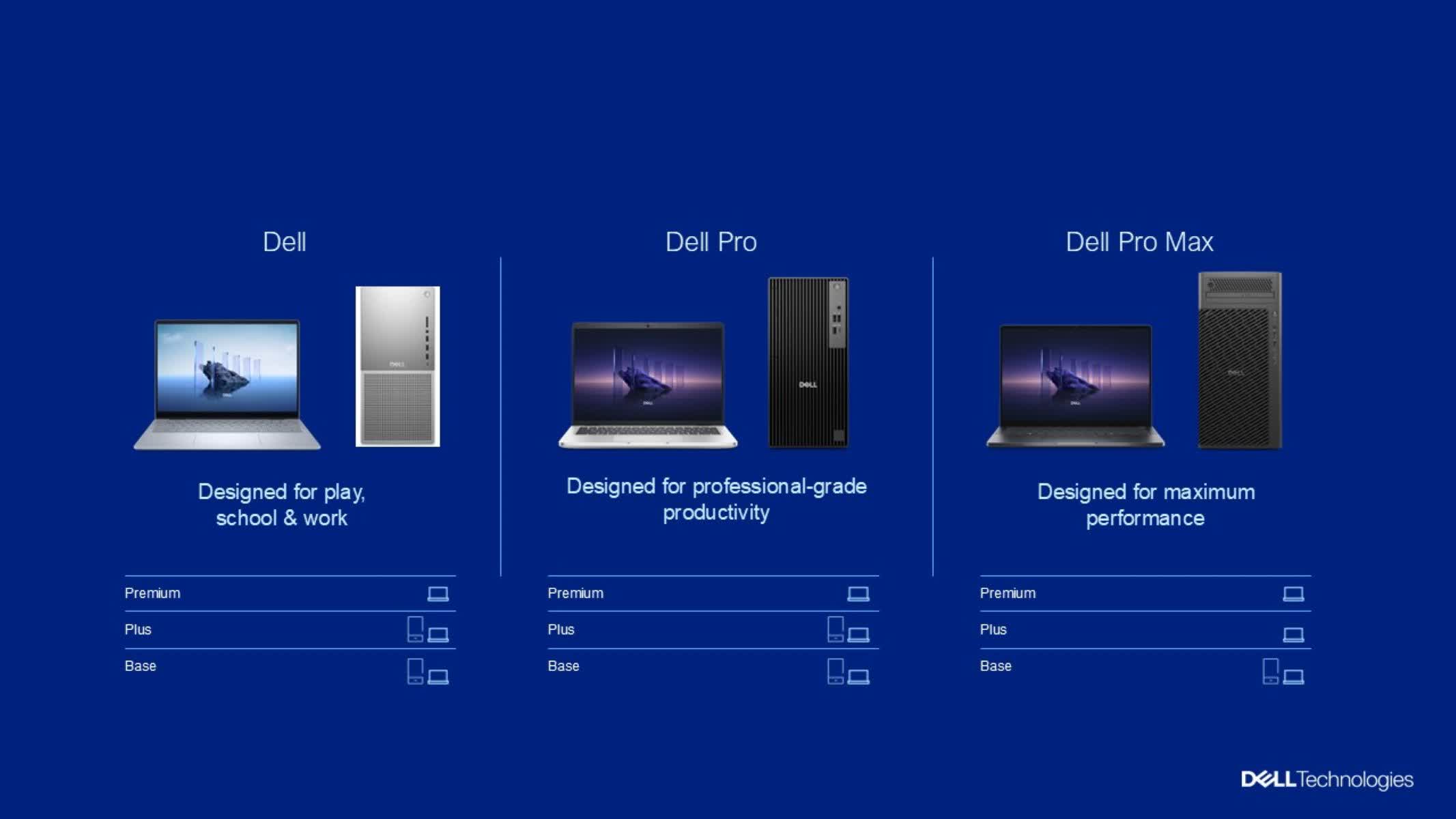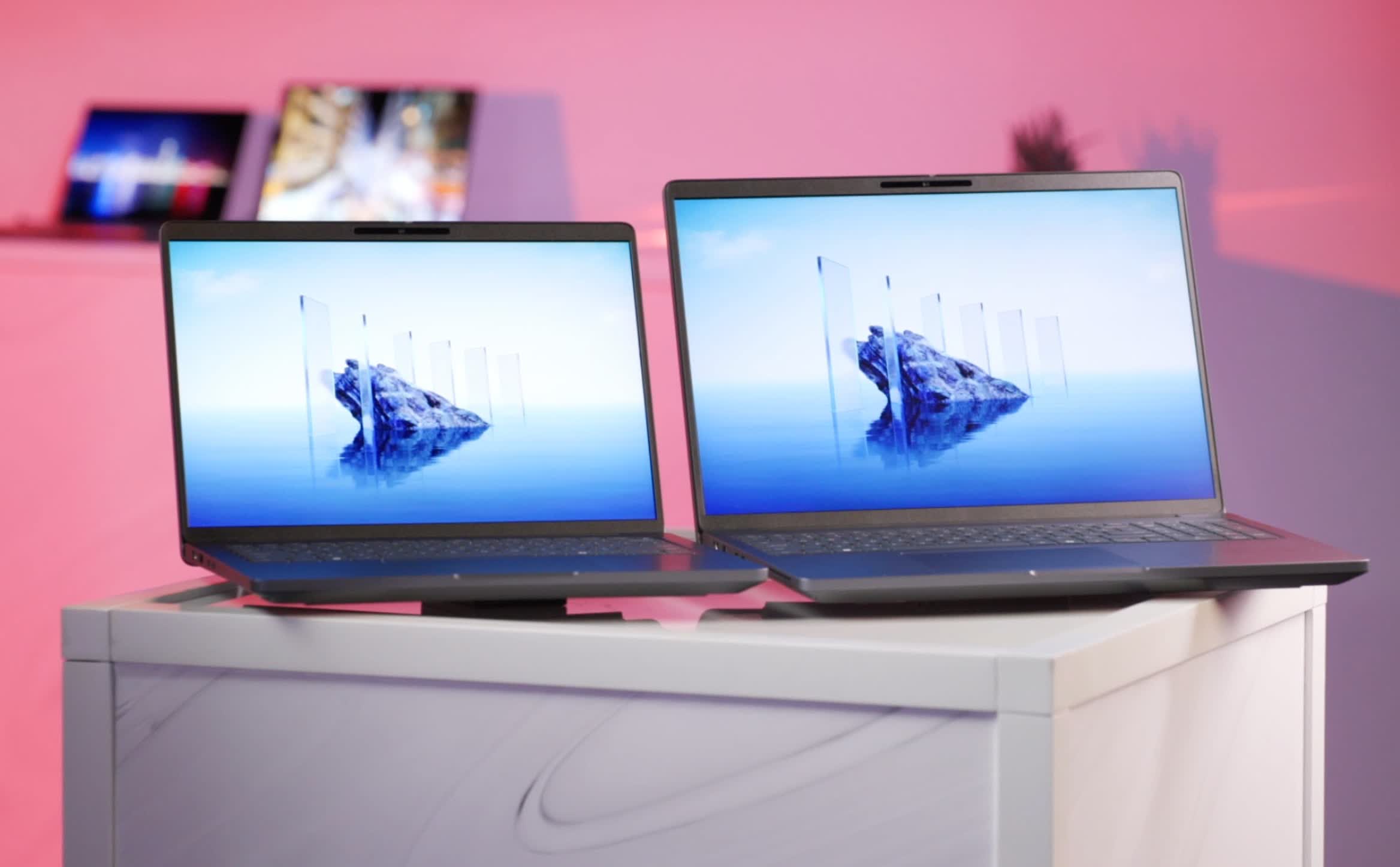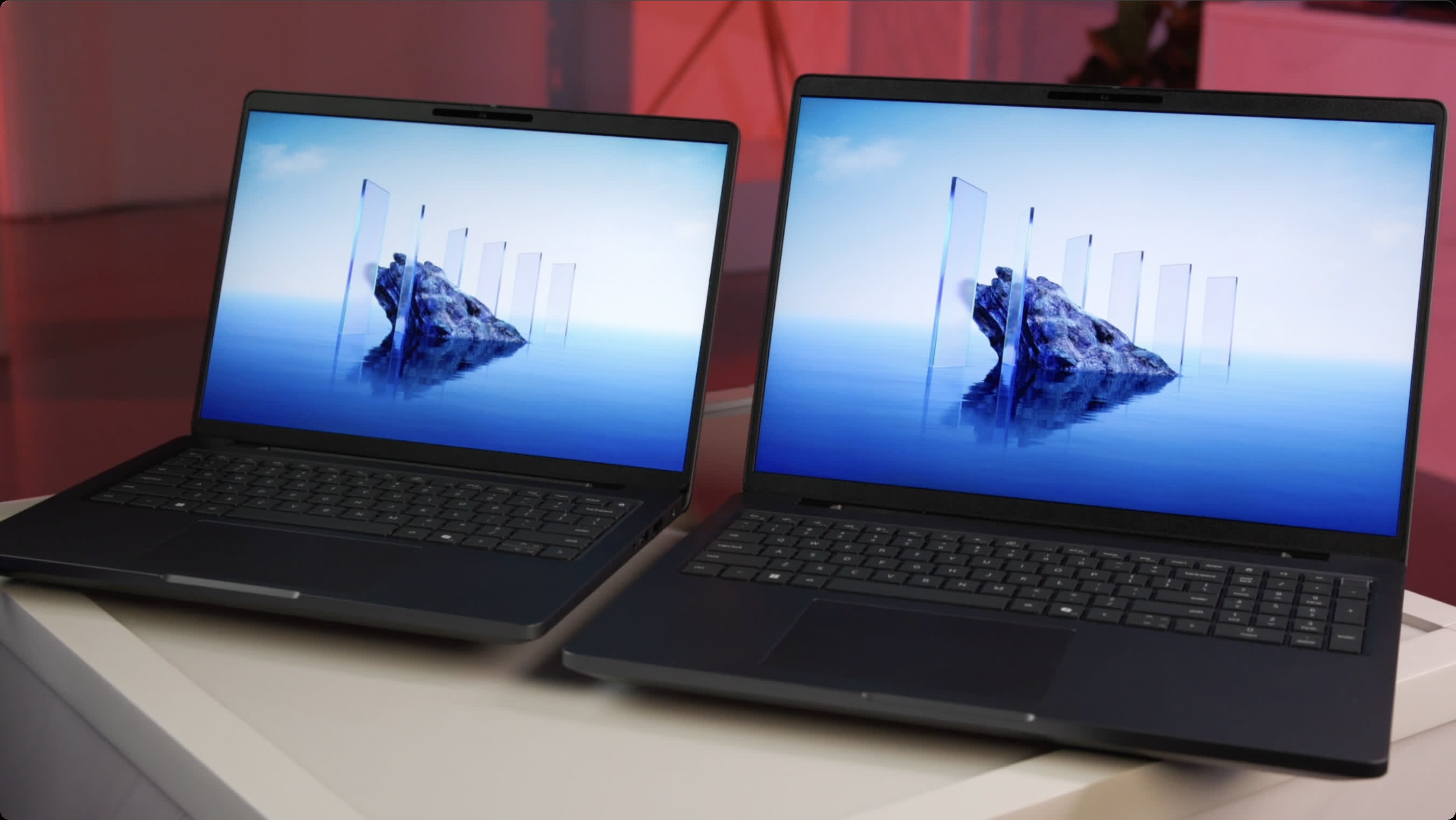Cutting corners: The XPS, Inspiron, and Latitude brands have been integral to Dell’s identity since the 1990s. However, starting with its 2025 lineup of laptops and desktops, the company is adopting a simplified naming scheme that reflects three distinct performance and price tiers.
Dell’s 2025 laptops are now available for order, marking a significant departure from nearly three decades of tradition. The devices feature a new naming convention designed to clearly signal their intended market segments.
The Inspiron, Latitude, and XPS brands will be replaced with Dell, Dell Pro, and Dell Max. The simple “Dell” name will indicate relatively affordable laptops and desktops for school, work, and leisure. Meanwhile, Dell Pro systems will target professional IT users, while the highest performance levels are reserved for Dell Pro Max.

Dell introduced its first XPS laptop in 1993, followed by the debut of the Latitude XP in 1994 and the launch of the Inspiron series with the Dell Inspiron 7000 in 1998.
While last year’s XPS, Inspiron, and Latitude devices will remain available until inventory runs out, most of Dell’s future PCs will adopt the new, streamlined naming system. Despite these changes, Dell will continue to offer its Alienware gaming brand.
The three new tiers will also include subcategories indicating screen size and form factor. For example, 14-inch and 16-inch Dell Pro Plus laptops are currently available for around $1,700. Premium models are closer to $2,000, and rugged variants with durable shells occupy the highest price bracket despite featuring older Intel Core Ultra 100 processors.

Other upcoming laptops, desktops, and monitors using the new naming scheme are expected soon.
Dell has also embraced the growing trend of AI-enabled PCs. The Dell Pro desktops will be the company’s first pre-built towers to include NPUs for handling onboard generative AI workloads.
Additionally, Dell announced a new development kit for AI models optimized for NPUs. The company claims its new Pro AI Studio – featuring Dell tools, frameworks, templates, and models – can reduce development and deployment times by up to 75 percent.

The company also revealed three new 4K monitors that will ship in the coming weeks.
The new 32- and 27-inch UltraSharp Thunderbolt Hub displays, retailing for $950 and $700, respectively, on February 25, support Thunderbolt 4, USB-A, USB-C, and RJ45 ports with 140W power delivery. Meanwhile, a new 32-inch QD-OLED display with a 120Hz refresh rate will be available on March 27 for $800.









Leave a Comment